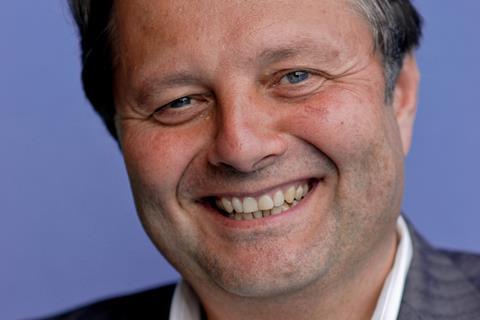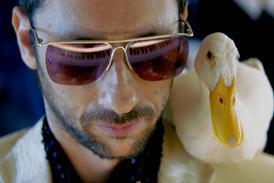Jérome Paillard, executive director of Cannes Marché du Film, explains how he helped turn the business-shy Cannes Film Festival into the largest cinema market in the world.

Jérome Paillard has his sights set on the future. “Even though I’m not sure I belong to the future of the market, it’s something I spend a fair amount of time thinking about,” says the 63-year-old executive director of the Cannes Marché du Film.
Paillard took the top post at the Marché in 1995 after working with the late flamboyant producer Daniel Toscan du Plantier at Erato Films, having joined the company when it was a classical music record label. His arrival coincided with a changing attitude at the festival with regards to its market component.
“Having neglected the business side of the event for years, Cannes had come around to the idea it should get behind its market,” explains Paillard. “I was given carte blanche to build it up.”
His predecessors had pioneered a system of market screenings but the official market remained rudimentary and confined to some 50 stands in the basement of the Palais des Festivals. Aside from kicking out the handful of companies selling porn films, the first thing Paillard did was close the chasm between the official market in the Palais and the organic market that had sprouted up in the hotels and apartments along the Croisette.
“The festival regarded the people operating outside of the Palais a bit like the devil. The first thing I said was, ‘Let’s change the paradigm and say the market is both the Palais and the whole of the Croisette,’” recalls Paillard.
There was opposition on both sides, especially from third-party operators running independent screening venues around the Croisette.
Paillard set about amalgamating the two parts of the market, almost by stealth, pooling information about the different screening programmes and the details of the companies in attendance outside of the Palais — something that had never been done before that.
“The resistance was enormous. At first no-one would give us their screening schedules. We would ask the hotels which companies were setting up offices and none wanted to tell us at first, we just kept persevering,” says Paillard.
On the basis of the information he and his team managed to glean, Paillard had signage created indicating where companies were based and adorned with the Marché du Film logo, which he then had placed around the Croisette and in the surrounding hotels. “It gave the impression that somehow the Marché was involved even though at that stage we weren’t. We had to take the initiative,” says Paillard.
Working in collaboration
He has worked hard to keep this all-encompassing spirit alive to this day, making sure the market remains open to both Marché du Film and Cannes Film Festival badgeholders alike. Any move to restrict access to market badge-holders only — in the way Berlin’s European Film Market attempted this year — would be “suicidal”, he suggests.
Today, the market spans to some 400 stands spread out across the Palais and the newer Riviera and Lérins wings as well as the International Village. The biggest challenge for the Marché, which registered more than 12,400 participants and presented 3,000 films (720 of them premieres) in 2018, is keeping the event human and manageable for all those who attend. “It’s this huge machine and that can scare people. They worry they won’t find their place or connect with the right people,” says Paillard. “We’ve developed a segmented programme to offer a lot of smaller markets within the big market which are more human in scale.”
These segments include the genre-focused Frontieres Platform, co-organised with Fantasia International Film Festival; the Producers Network; the documentary-focused Doc Corner and Doc Day; Animation Day; and the forward-looking NEXT programme, exploring the latest technological developments shaking up financing, production and distribution.
The latter sidebar has been tweaked to move the immersive technologies of Virtual Reality (VR) and Augmented Reality to a separate strand called Cannes XR, which will showcase hundreds of immersive experiences. “VR became so vast it started to dominate the NEXT programme,” says Paillard. “By moving VR to its own section, we can shift the focus to other new developments like blockchain or big data and new start-ups.
“We also wanted to connect the VR component more with the festival,” he continues. “It’s hard to predict where this new technology is going and what role it will play within cinema, but what we do know is that we need to keep tabs on it.”
As busy as ever
Paillard acknowledges the biggest technological development shaking the film market is the rise of the digital streaming platforms, which has put pressure on the traditional films sales model. But he says he has yet to see hard evidence of the sector’s decline at the market.
“For years I’ve been expecting there to be fewer and fewer screenings. But it never happens. Each year, we end up with some 1,500,” he exclaims.
There were suggestions last year — based on anecdotal evidence — that Marché attendance was down. Paillard says even though he found the Croisette “more fluid” and that it was easier to get a restaurant booking, the data shows market participation was as high as ever. “When we look at the admissions into the Palais as well as other data around wifi usage and the 1,500 responses to our post-market questionnaire, it shows the market was as busy as ever, with the average stay lasting 8.5 to 9.3 days,” he says.
“More than half the market attendees are neither sellers nor distributors. The producer population continues to rise and we have some 1,300 festival programmers coming in each year with Cannes being a major source of films for festivals going on around the year,” he adds.
“I have no doubts around the future of the market and the festival. The internet can help you prepare, but it’s not so easy to convince a producer or director to come on board a project over Skype. It’s only by meeting someone you can get a true sense of what they’re about. People need to meet in person to make films happen. There will always be a need for human contact.”






![The Brightest SunScreen[Courtesy HKIFF]](https://d1nslcd7m2225b.cloudfront.net/Pictures/274x183/3/5/0/1448350_thebrightestsunscreencourtesyhkiff_312678.jpg)



























No comments yet